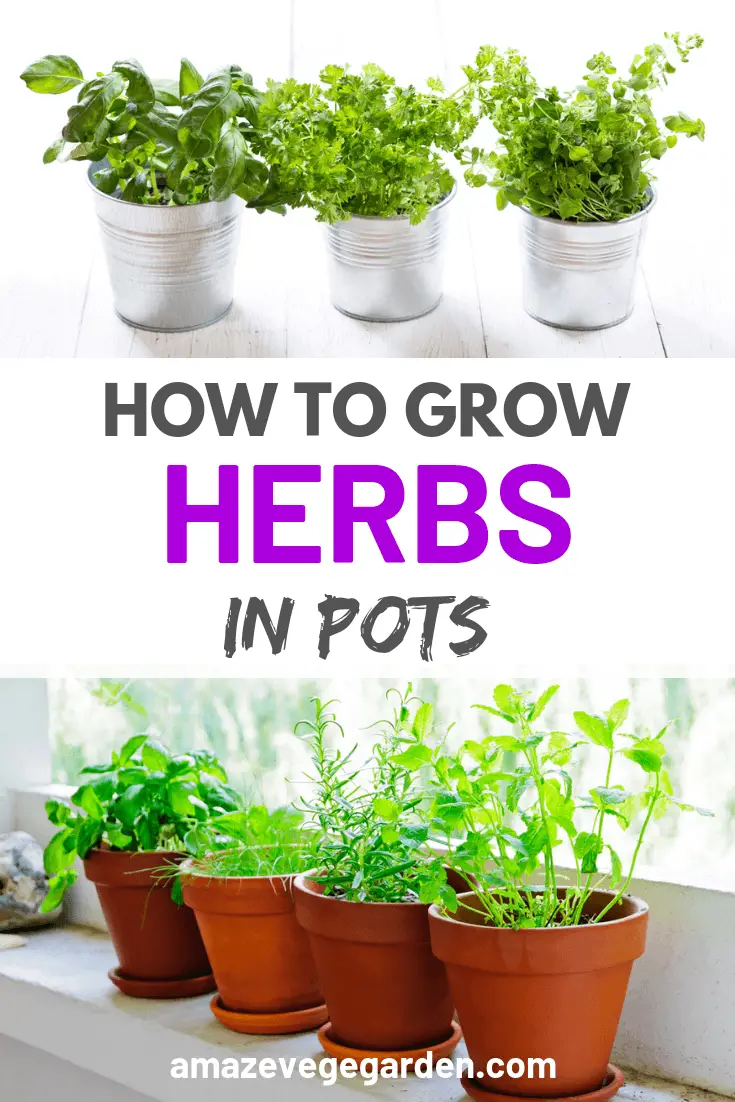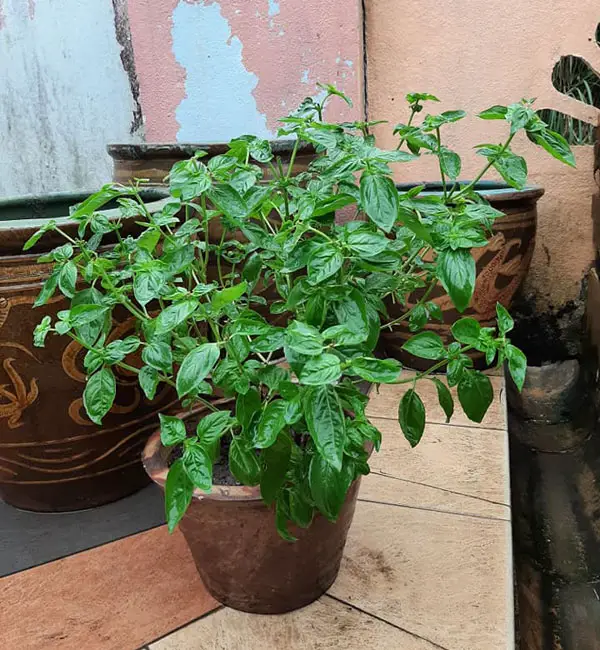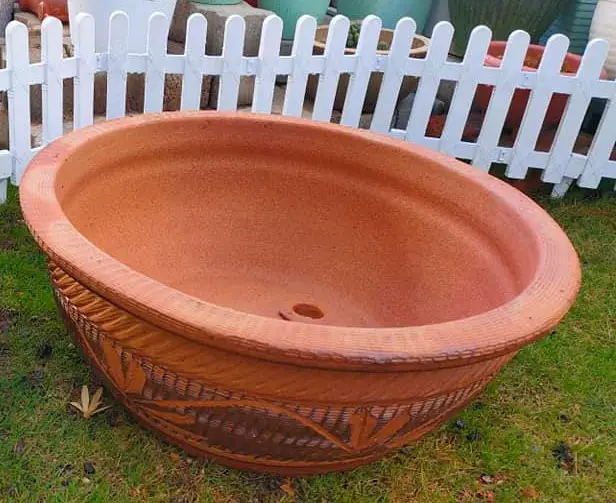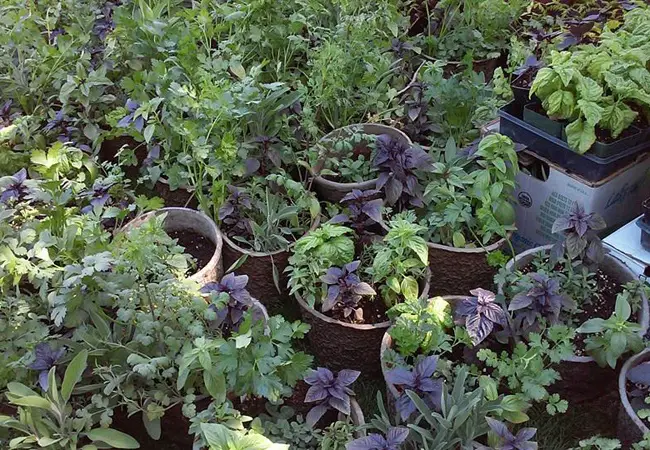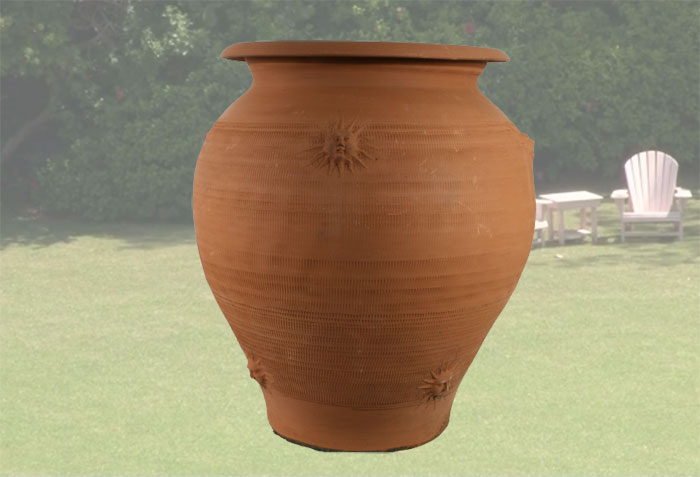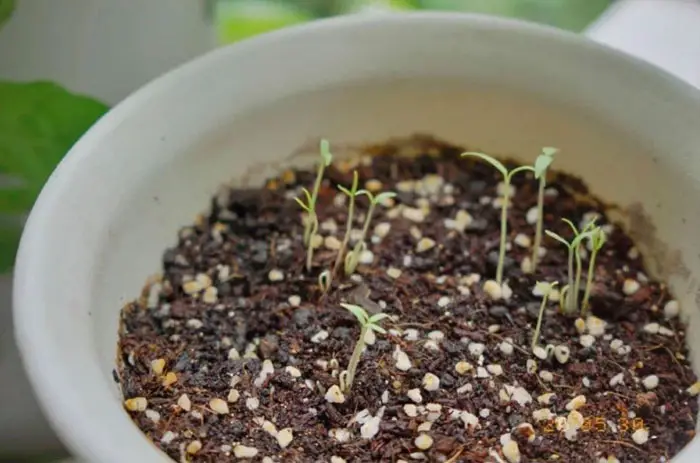If you are new to grow herbs in pots, you can start small and work your way up to a larger herb garden. Many plants are perfect for starting to grow in pots. If you are planning to start growing herbs outdoors, you will only need a small area. Approximately four feet by six feet is plenty large enough.
What Type of Herb Will do You Grow?
Before you begin growing herbs in your pots, ask yourself a few questions. Are you going to grow herbs for medicinal purposes? On the other hand, are you growing herbs for cooking or just because of their beauty?
Depending upon the use you will have for the herbs, your garden will either be ornamental, or you will pick and dry the herbs. If you are growing herbs for their beautiful foliage and flowers, you will not have to worry about picking or drying them. Remember, most herbs like to have about six hours of sun, and some thrive in the shade.
One of the most popular types of herbs to plant is basil. Sweet basil is great for adding to tomato sauces, juices, and pastes. You may plant the seeds directly into the soil, and you will see them beginning to grow in about a week or ten days.
The basil plant will get up to 18 inches tall, and plants should be spaced about a foot apart. Some people use the Dark Opal variety of basil for the beauty it adds to their garden. This type has deep red leaves, and the flowers are pink.
Chives are another herb that you hear about quite often. They can be grown from seed and started indoors if you like. They will start to appear in about a week and almost look like grass. So be careful and do not pull up your chives.
They should be placed about 6 inches between plants. They will grow to about a foot tall, and chives can take just about anything you throw at them. Drought, cold weather – they do not seem to care. Used in sauces and egg recipes, and salads, chives are often grown as a border plant.
The lavender plant is great for drying to use in drawers. Their aroma is heavenly and can be used in linen closets to keep it smelling fresh and wonderful. The seeds can be planted and will sprout in about two weeks. They should be hung to dry when the size desired is achieved. As long as the area is dry, they will do fine.
Choosing Your Herb Garden Pot
One of the easiest ways to start growing your herbs is to use a pot or container rather than the garden. Many herb gardening beginners use plastic ice cream or yogurt cartons and wooden boxes lined with plastic sheeting.
However, I recommend using clay pots. They aren’t expensive these days, and they last longer than plastic or wood. They will also help to keep the soil in your pot cool on a hot day.
Planting herbs in pots and containers isn’t a new thing. Hundreds of years ago, the Romans, Greeks, and Egyptians grew their herbs in pots or containers, and more recently, the Victorians were big fans of container herb gardens.
In fact, the Victorians were very good at manufacturing clay pots for their gardens, and it’s still possible to get hold of great-looking Victorian garden pots in antique shops and at antique fairs.
Suppose you want to make your container herb garden rather special try and find an antique Victorian garden pot. The opposite is a superior example, but there are also lots of less impressive and cheaper pots around.
If you decide to use clay herb garden pots, you’ll find lots of different types and shapes to choose from and your local garden center.
You’ll find that the styles range from modern to classic (like the one in the photograph), so you’ll need to use your imagination to select a pot that’s right for the herb garden you plan to create.
If your imagination doesn’t stretch that far, take some pictures of different sorts of pots and ask your friends for their opinions.
Make sure that you get a clay pot that’s big enough to take a reasonable number (five or six at least) of herbs. A 12″ diameter pot is a good size to start with, although I can guarantee that after your first year of herb growing, you’ll want to get a larger pot and expand your choice of herbs.
Get to Know The Basics Before Choosing Your Pot
While a standard plant pot is commonly used to raise and display indoor and outdoor plants, smaller ones are used to seep and raise young plants. They are usually made of clay or wood, although metal and plastic plant pots are becoming a common sight.
When considering a container, remember that most plastic pots tend to crack in cold weather and are not ideal for growing plants outdoors. Rather, select a pot made of polythene and polypropylene as this will not disintegrate in the cold.
Because of their flexibility, polythene pots can be folded flat for storage without getting damaged. They become free-standing once they get filled with garden soil and can pick out seedlings before planting.
Environment-friendly biodegradable pots mix wood fiber or recycled paper, peat, and essential nutrients to enhance plant growth. These pots are ideal for plants with sensitive roots that can’t be stirred up as the pot can be set directly into the ground.
The pot gradually degrades and allows the plant’s roots to pass through it to base on the surrounding soil. Biodegradable pots can be constructed by gardeners from double-thick newspapers formed into cones.
Most Pots Are Round and Square
Most herb pots for sale are available in round and square shapes. While the round pots are traditionally used, square pots can take in more compost and be crammed together to make more space. Make sure to use a pot with sloping sides. This will allow easy removal of the plant and its root system for repotting or ground planting.
Most standard pots have the same width and height, although this may vary with other versions. Seed pans, used for seed germination, have a depth that’s a third of its diameter. Half pots, used for plants such as the evergreen azaleas, which have small root systems, have a depth that’s half its diameter. Long Toms, ideal for plants such as lily-of-the-valley and alpines that require deep root runs, have a depth that’s one-fourth to one-third longer than its diameter.
Plant pot saucers can be utilized to capture excess water after watering plants and can also be used to provide plants water from below. They can be obtained in plastic or clay and purchased as a set along with the matching plant pots. After watering, empty the saucers to prevent the potting soil from getting soggy.
In the picture opposite, the herbs have been planted in wooden troughs up against a sunny wall.
It’s not always a good idea to put all your herbs together in one pot. Some herbs, such as mint and chives, are best grown in individual pots.
Mint has a strong and vigorous root system and has the habit of taking up more than its fair share of soil space wherever its planted. For this reason, lots of gardeners choose to plant their mint in its own pot alongside all their other herb garden pots.
When choosing the pot for your herb garden, make sure you get one that doesn’t have too narrow a top. Those wonderfully shaped Ali Baba-type garden pots might look fantastic, but if you want to plant more than a couple of herbs in them, they are not ideal.
I use Ali Baba pots for my lavender plants. Each Ali Baba pot contains just one lavender plant, and when they are fully grown and in flower, they look fantastic – and the bees really appreciate them.
Preparing Your Pot
The soil in your herb pots has to have the right texture to allow the roots of your herbs to expand and air and water to get in. You can use ordinary garden soil, but soils in different locations can vary so much that it’s best to make up your own soil mixture.
Soil For Growing Herbs
The soil you use for your herb garden is going to be a combination of soils. The best ones for herbs are peat, loam, silt, sand, and clay. You should test the soil for the pH level, which should be between 6 and 7. This is the best level for growing herbs. The soil needs to be good rich soil and have good drainage. The use of compost in the soil before planting helps herbs to get a good start.
The ideal mixture is a combination of good quality compost (which contains the necessary plant nutrient) mixed with a gritty/sandy material that will help with drainage and breathing.
Any good quality compost will do, and I recommend mixing Perlite with it to get the ideal soil mix for your herbs. Perlite is easy to get hold of from garden centers and DIY stores. If they don’t have Perlite, ask for a similar alternative.
Use 1 part of Perlite to 2 parts of compost and mix them thoroughly together. Many composts are ideal soil mixes for herbs, some of them quite complicated. I find that the compost and Perlite mix works very well.
Before you put the compost mix into your pot, make sure that you lay some stones or stony gravel over the hole in the bottom of your garden pot. This is done to help with drainage. I use old broken pot pieces, but the stones are fine.
One big advantage of growing herb plants in containers or large pots is that you can move them around to catch or avoid the sunlight in your garden.
Unfortunately, once your herb garden pot has been planted with herbs, it will be quite heavy and difficult to move, but you can make it movable by buying or constructing a wheeled platform for the pot.
The one shown in the photograph is an elegant iron one, but a simple wooden base with wheels similar to those on an armchair will do the job just as well.
Fill your pot almost to the top with your soil mixture, and then plant your herbs, making sure that they are at the same depth as they were in the pots they came in.
Also, make sure that there is sufficient space between each plant to avoid overcrowding as they grow. These distance requirements vary from herb plant to herb plant because some herbs can grow very large and over-shadow and stifle smaller, less vigorous herbs.
Looking After Your Herb Garden Pots
In general, herbs like lots of sunlight and water. You should water your herbs once a day but avoid over-watering them. The disadvantage of watering container-grown plants is that the water leeches the nutrients out of the soil mix.
A lot of composts you can buy have added nutrients (fertilizer). Still, the soil in your pot or container needs to be provided with additional fertilizer regularly to make up for the nutrients that are washed away.
To make up for this nutrient loss, either uses liquid fertilizer (ideally once a week) or lightly fork a solid fertilizer into the soil around your herbs.
The solid fertilizer doesn’t need to be used so frequently. I use a granular general-purpose fertilizer which helps to keep my herb plants healthy throughout the growing season.
When you next visit your garden center or DIY store, look on the shelves of different fertilizers to see what’s available. Suppose you are uncertain about what to choose to send me an e-mail and tell me where you are located, and I’ll try and help.
At the end of the growing seasons, many of the herbs in your herb garden pots will have grown very large. If you intend to continue growing your herbs in pots or containers, the best thing to do is to throw these plants away after you have harvested them and start the following year afresh.
However, when you get more experienced, you will be able to take stem and root cuttings from some of your herbs and use these to create a new herb garden the following year. Another alternative is to transplant these overgrown herbs in your garden (if you have one).
Read also: Benefits of Using Plastic Planting and Nursery Pots.
Did you find this post useful? Would you like to get back to it later? Save THIS PIN below to your gardening, herb garden, or house plant board on Pinterest! Thanks 🙂
